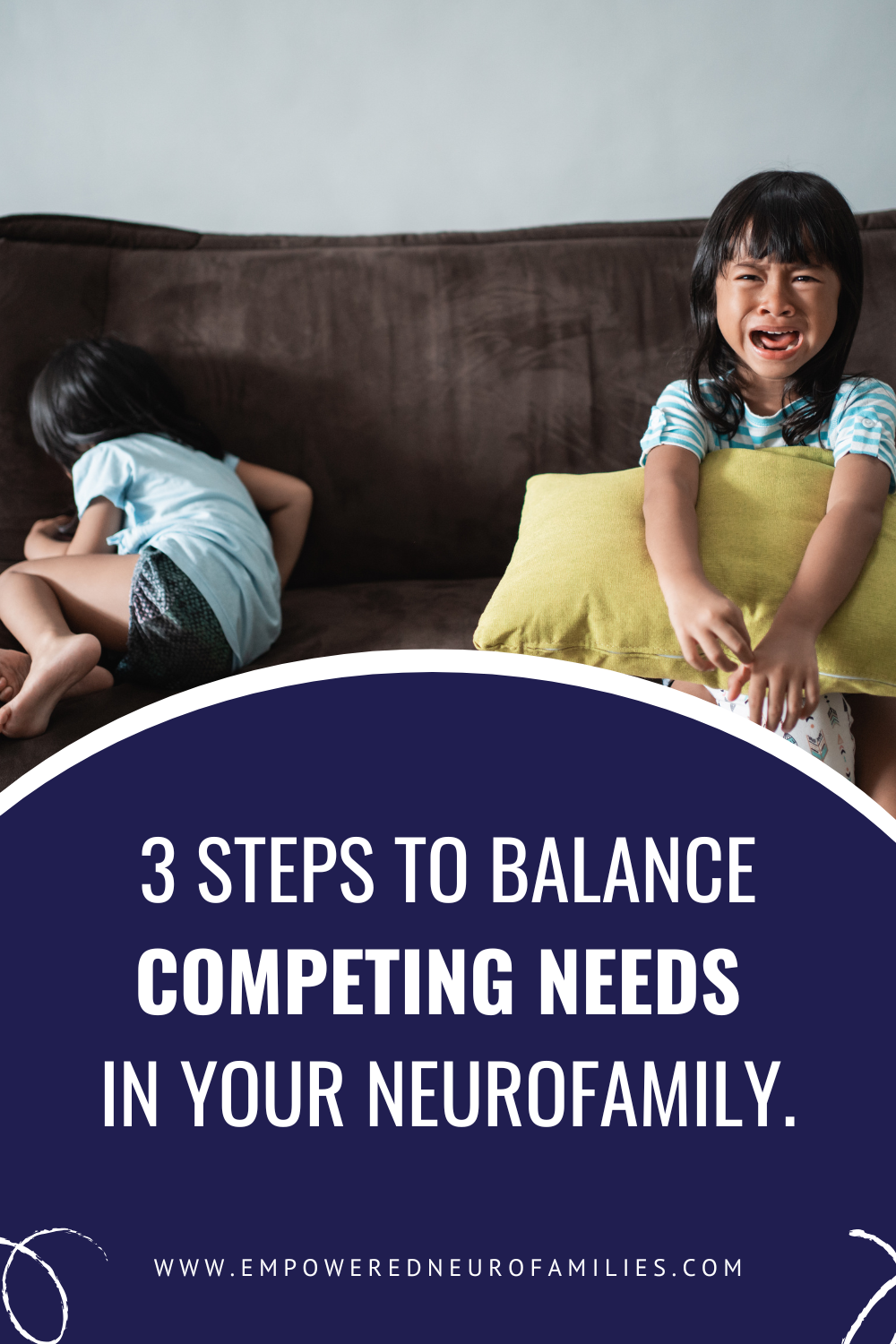Develop the UNique flavor of parenting strategies that ACTUALLY work for your neurofamily.

NEurofamily.
/n(y)ərō,fam(ə)lē/
noun.
A group of humans that love each other and all have different neurology. That means their brains and bodies all work differently, so sometimes they need different things. (And LOTS of times those different things directly compete!)
See Also:
Co-Accommodation (Also Searched)
Weird-Ass Families (Synonym)
Normies (Antonym)
Here’s the deal
I can’t read a single parenting book without feeling guilty AF. And I’m a freaking parent coach.
Maybe you can relate?
The reality is, no parenting advice out there is built for everyone.
Not even “neurodivergent-friendly best practices” are going to work for every neurofamily out there.
I can’t count how many times I’ve been told my Autistic son needs a visual schedule because that’s what’s “autism-friendly”, despite the fact that he’s an auditory learner.
The reality is that ALL neurodivergent kids are different. Heck, all AUTISTIC kids are different.
And don’t even get me started on how different neurofamilies are.
The strategies that work for my best friend’s neurofamily would NEVER in a billion years work for mine. That’s what makes us so freaking cool.
WORK WITH KAYLENE
Neurofamily Architect
Enroll in this high-touch 1:1 coaching program to get exclusive and unlimited support to design and build the neurofamily you’ve always wanted.
Specific Online
Resources
Explore every resource I’ve ever created that address specific struggles for your neurofamily like meltdowns, boundaries, behaviors, and more.
The Neurofamily Collective
Join an inexpensive monthly community with resources and guidance for your neurofamily
each and every month.
Hey FRiend, Kaylene Here.
I'm a multiply-disabled neurodivergent adult raising 6 neurodivergent tiny humans with my husband who has ADHD and dyslexia.
We're what I call a neurofamily.
(I’m guessing you are too!)
I'm also a parent coach and I’ve spent the last decade helping parents just like you develop the unique flavor of parenting strategies that ACTUALLY work for their weird-ass neurofamilies. :)
In that time I’ve had the privilege of coaching hundreds of parents with unique circumstances—toddlers, teens, non-speaking, highly verbal, comorbid disorders, single parents, only children, large families, homeschoolers, and more—and I’ve seen what’s actually working right now behind the scenes in families just like yours.
It’s my mission to help empower neurofamilies like ours to build the family lives that we deserve, and that make sense only for us instead of trying to follow “best practices” until we feel like epic failures.
It’s Time to
empower parents again.
Over the last few years, I've seen more and more parents who are scared to make a move, and I understand why.
We have thousands of messages coming from all sides telling us that what we're doing is wrong, not enough, or downright harmful.
We're trying to break cycles... We're trying to set our neurodivergent kids up for success...
But it all feels freaking impossible when
one person tells you that if you don't stay consistent your kid will fail at life…
and the other is telling you that if you do stay consistent your child will feel invalidated and need therapy for life…
It's time we say fork that, if you ask me.
So if you're ready to feel like a real parent again—one who is capable of making decisions and is allowed to make the best decisions for their unique family circumstances—you're in the right place, friend.




















